Ryoji Noyori Prize
Professor Thorsten Bach
Professor of Organic Chemistry, School of Natural Sciences and Catalysis Research Center, Technische Universität München
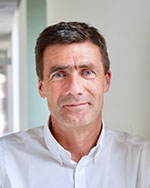
Professor Bach is the pioneer of enantioselective photochemistry and one of the leading experts in the field. He and his group showed successfully that chirality can be introduced by photochemical transformations, both in a stoichiometric and a catalytic sense. By using hydrogen bonding interactions, a temporary chiral confinement was created in which photochemical reactions proceeded with high enantioselectivity. Bach established the use of chiral Lewis acids for catalytic photochemical reactions, and he successfully devised chiral sensitizers as catalysts for visible light-induced asymmetric photochemistry. In recent years, he demonstrated that photochemistry can be employed to convert racemic mixtures into single enantiomers (photochemical deracemization) employing either a selective triplet energy transfer or a reversible hydrogen atom transfer as vehicle to facilitate the counter-thermodynamic process. His creative ideas and his ground-breaking research accomplishments have taken photochemistry to the next level of complexity.
News Release: -The Winner of the Prize for the award year 2024
What’s the Ryoji Noyori Prize ?
- Name
- Ryoji Noyori Prize sponsored by Takasago International Corporation (Administered by the Society of Synthetic Organic Chemistry, Japan )
- Purpose
- To recognize and encourage outstanding contributions to research in asymmetric synthetic chemistry defined in its broadest sense.
- Nature
- The Prize consists of a certificate, an ornament, and $10,000. The recipient shall deliver a prize lecture at the annual general meeting of the Society of Synthetic Organic Chemistry, Japan (SSOCJ) at which time the prize will be presented. The travel expenses to the Meeting will be paid.
- Establishment and Support
- The prize was established by SSOCJ in 2002 to commemorate Ryoji Noyori’s winning distinction of the 101st Nobel Prize in Chemistry as well as the 60th anniversary of SSOCJ and is sponsored by Takasago International Corporation.
- Rules of Eligibility
- The Prize shall be granted to an individual without regard to age or nationality for the outstanding achievement in the field of asymmetric synthetic chemistry defined in its broadest sense.
- Nominations
- Any individual may submit only one nomination form in any given year.
Nomination form
The documents are retained on file for three prize-years.
- Selection
- An international prize committee selects the recipient. The Committee consists of seven appointed members [four from Japan, including an academic vice president of SSOCJ (chairperson) and three from abroad]. These appointments are made by the President of SSOCJ.
Past Ryoji Noyori Prize Recipients
Professor Kenso Soai
Professor Emeritus, Tokyo University of Science, Japan
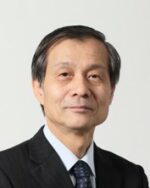
Professor Soai made a groundbreaking discovery in the realm of chirality by identifying the first instance of asymmetric autocatalysis involving 5-pyrimidyl alkanol in the enantioselective addition of diisopropylzinc to pyrimidine-5-carbaldehyde, called as the Soai reaction. Asymmetric autocatalysis is a reaction in which a chiral product serves as a catalyst for its own production. The Soai reaction exhibits the remarkable capability to significantly enhance the enantiomeric excess of the initial asymmetric autocatalyst, transforming it into a near-enantiopure compound during the consecutive asymmetric autocatalysis. Furthermore, his research delved into the origins of chirality, using various chiral triggers within the Soai reaction to relate to the chirality of highly enantioenriched organic compounds. The Soai reaction was found to be triggered by diverse factors, including chiral minerals, circularly polarized light, chiral crystals composed of achiral compounds like γ-glycine and isotope chirality. Most astonishingly, the Soai reaction demonstrated the ability to achieve spontaneous absolute asymmetric synthesis without any external chiral factors. Thus, Professor Soai has made invaluable contributions to the study of chirality.
Professor Gregory C. Fu
Norman Chandler Professor of Chemistry, Division of Chemistry and Chemical Engineering, California Institute of Technology, USA.
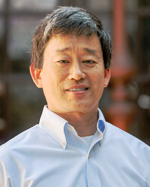
Professor Fu has made important contributions to the development of new synthetic methods based on his original design of catalysts and reactions. Fu designed planar-chiral nucleophilic catalysts by fusing DMAP to ferrocene for a variety of asymmetric reactions as represented by acylative kinetic resolution. This achievement, where nitrogen atoms in designed catalysts function as a “working element” in asymmetric catalysis, served as an early contribution to the field of “asymmetric organocatalysis”. Fu’s research interests also include transition-metal catalysis. He established a way to utilize unreactive chloroarenes in Pd-catalyzed sp2–sp2 cross-couplings using tri-t-butylphosphine as a ligand. Fu then turned his attention to asymmetric sp3–sp3 carbon–carbon bond-forming cross-couplings using chiral nickel catalysts. His work on enantioconvergent reactions of racemic electrophiles is particularly notable. Fu also succeeded in asymmetric sp3 carbon–heteroatom bond-forming cross-couplings using chiral copper catalysts under irradiation of light. Unlike conventional transition metal/photosensitizer binary catalyst systems, his system needs only a single catalyst. Fu’s achievements are admired not only for their superb profiles and the uniqueness of the individual reactions, but also for their role in pioneering new research fields and applications in organic synthesis.
Professor Erick M. Carreira
Professor of Chemistry, ETH-Zürich, Department of Chemistry and Applied Biosciences, Institute of Organic Chemistry, Switzerland
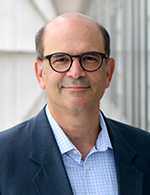
Prof. Carreira’s research program is well known for its scientific depth and thematic breadth. Over the past three decades Carreira has successfully established himself in various areas, including natural products synthesis, methodology, asymmetric catalysis, medicinal chemistry, and chemical biology. In catalysis Carreira has developed concepts leading to a variety of metal-based catalysts for a wide range of catalytic, enantioselective aldehyde addition reactions, alkyne activation, conjugate addition reactions, cycloadditions, and allylation reactions. Carreira has pioneered the use of chiral olefins as steering ligands for catalytic enantioselective catalysis with Ir- and Rh- complexes. He also developed olefin functionalization reactions with cobalt and manganese catalysts, enabling synthesis of organochlorides, azides, hydrazides, nitriles. The work served to inspire subsequent developments in what is termed as HAT chemistry, widely employed in the service of complex molecule synthesis. A family of Ir[P,olefin] complexes enabled the identification of fully stereodivergent, dual‐catalytic, enantioselective transformations, providing convenient access to the full range of stereochemical diversity of products from the same set of starting materials under identical conditions.
Professor Tsuneo Imamoto
Professor Emeritus, Chiba University & Visiting Professor, Hokkaido University, Japan
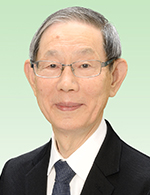
Professor Imamoto is a pioneer in the use of phosphine–boranes for the synthesis of chiral phosphine ligands. He designed and synthesized many new P-chiral phosphine ligands and demonstrated their superior performance in asymmetric catalysis. The air-stable P-chiral phosphine ligand QuinoxP* is widely used in both academia and industry. He also made significant contributions to the mechanistic studies of rhodium-catalyzed asymmetric hydrogenation in collaboration with Professor Ilya D. Gridnev. Another outstanding achievement is the development of cerium(III)-modified organometallic reagents, which have found widespread use in the efficient addition reactions of carbonyl compounds.
Professor Scott E. Denmark
Reynold C. Fuson Professor of Chemistry at the University of Illinois at Urbana-Champaign, U.S.A.
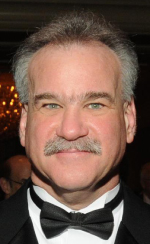
Professor Denmark has pioneered the concept of chiral Lewis base activation of Lewis acids for catalysis with Main Group elements. He has also developed palladium-catalyzed cross-couplings with organofunctional silicon compounds and mechanistic studies on the Suzuki-Miyaura cross coupling. In recent years, his group has investigated the use of chemoinformatics and machine learning to identify and optimize catalysts for enantioselective reactions. Earlier contributions include the development and application of tandem heterodiene cycloadditions for the synthesis of complex natural and unnatural nitrogen containing compounds. He maintains a longstanding interest in organosilicon, -phosphorus, and -lithium chemistry.
Professor Yoshito Kishi
Morris Loeb Professor of Chemistry, Emeritus, Harvard University, U.S.A.
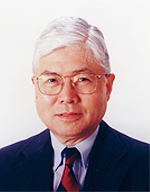
Professor Kishi has been engaged in a wide range of research on complex natural products with significant biological activities. He pioneered the area of acyclic stereocontrol, completed the total synthesis of numerous complex natural products including neurotoxins (palytoxin, tetrodotoxin, etc.), polyether antibiotics (monensin, lasalocid A, etc.) and antitumor natural products (halichondrins, mitomycin, etc.), and advanced a new concept for stereochemistry assignment of complex organic molecules. Notably, his research efforts on the halichondrin class of marine natural products paved the way for the successful creation of Eisai’s anticancer drug Halaven (Eribulin mesylate).
Professor David W. MacMillan
Department of Chemistry, Princeton University, U.S.A.
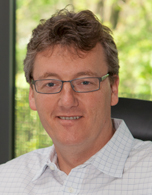
Professor MacMillan has been a pioneer in both the areas of organocatalysis and photoredox catalysis. Within organocatalysis he invented the area of iminium catalysis and made significant contributions to hydrogen-bonding catalysis, including the development of the MacMillan organocatalysts. He has also been a leader in bringing the field of photoredox catalysis to synthetic organic chemistry. This new area already has widespread applications in the pharmaceutical industry.
Professor Keiji Maruoka
Department of Chemistry, Graduate School of Science, Kyoto University, Kyoto, Japan
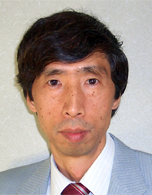
Professor Maruoka designed a series of chiral high-performance organocatalysts such as base, acid, bifunctional, and radical organocatalysts for asymmetric organocatalysis. His most important and significant achievement is the development of asymmetric phase-transfer chemistry by designing “Maruoka Catalyst®”.
Professor Larry E. Overman
Distinguished Professor, Department of Chemistry, University of California, Irvine, U.S.A.
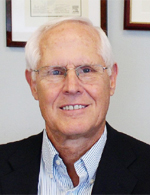
Professor Overman and his coworkers have completed total syntheses of more than 100 structurally complex natural products using synthesis strategies developed largely in his laboratory.
Professor Dieter Enders
Seniorprofessor RWTH Aachen University, Germany
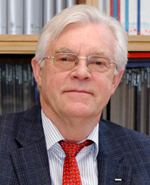
Professor Enders is a pioneer in the field of asymmetric synthesis. He has developed first broadly applicable chiral auxiliaries, such as SAMP/RAMP and demonstrated their efficiency in numerous natural product syntheses. He also established the field of asymmetric carbon-carbon bond formations catalyzed by N-heterocyclic carbenes and made seminal other contributions to the field of organocatalysis.
Professor Barry M. Trost
Stanford University, U.S.A. Job and Gertrud Tamaki Professor of Humanities and Sciences
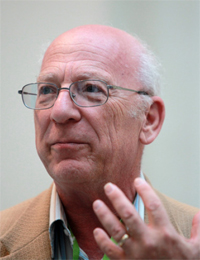
Professor Trost characterized by a very high order of imagination, innovation and scholarship, has repeatedly led to the invention of new synthetic reactions and demonstrated their effectiveness by the design of new strategic approaches for the total synthesis of bioactive molecules and has made important contributions in evolving some of the concepts of green chemistry, notably atom economy.
Professor Masakatsu Shibasaki
Professor, Director of Institute of Microbial Chemistry (BIKAKEN) and Emeritus Professor: The University of Tokyo, Hokkaido University, Japan
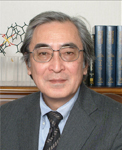
Professor Shibasaki has established the concept of cooperative asymmetric catalysis, developing many reactions with high atom economy. His accomplishments are also successfully highlighted in his catalytic asymmetric syntheses of bioactive compounds.
Professor Hisashi Yamamoto
Department of Chemistry, The University of Chicago, U. S. A.
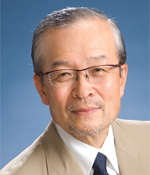
Professor Yamamoto was pioneered the use of binaphthol as a key ligand for chiral Lewis acid catalysts, which was the forerunner of a C2 symmetry based chiral acid catalyst. His combined Brønsted and Lewis acid catalysts are the most efficient among the asymmetric acid catalyst and his super Brønsted acid catalysts play an important role in the step-economical synthesis of complex molecules. He also introduced V, Zr, Hf, and Fe catalysts for asymmetric oxidation. These achievements have had a seminal impact in asymmetric synthesis.
Professor Eric N. Jacobsen
Department of Chemistry & Chemical Biology, Harvard University, U. S. A.
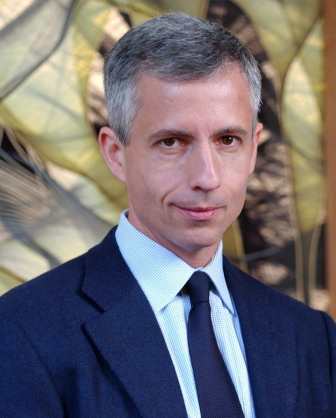
Professor Jacobsen discovered useful, chiral salen-based catalysts for asymmetric epoxidation of simple olefins, as well as effective new catalysts for aziridination, Diels-Alder, conjugate addition, hydrocyanation, and epoxide ring-opening reactions. He also pioneered the use of hydrogen-bonding catalysts in asymmetric synthesis. These methodologies, together with the mechanistic insights he has uncovered about them, have had a profound impact both in academia and in industry.
Professor Yoshio Okamoto
Distinguished Invited University Professor, Nagoya University & Chair Professor, Harbin Engineering University
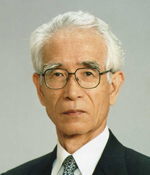
Professor Okamoto has made significant contribution to the areas of synthesis of helical polymers and their application to chiral separation of enantiomers. He was the first to succeed in the synthesis of one-handed helical polymer by asymmetric polymerization, and found its high chiral recognition ability to many racemic compounds. Using the polymer, he successfully developed a practical chiral packing material for HPLC. His another outstanding contribution is the development of very useful chiral packing materials based on helical polysaccharide derivatives, which are widely used throughout the world.
Professor Andreas Pfaltz
Department of Chemistry, University of Basel, Switzerland
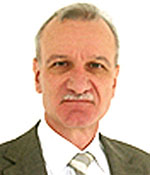
Professor Pfaltz is well known for his seminal contributions to asymmetric catalysis. The semicorrins developed in his group served as the prototype for an important new family of nitrogen ligands, the bisoxazolines, which have found widespread use in catalytic asymmetric synthesis. His work on phosphinooxazolines, known as PHOX ligands, has led to numerous efficient chiral transition metal catalysts. Most noteworthy are iridium-PHOX and related complexes, which are the first catalysts that allow highly enantioselective hydrogenation of unfunctionalized, purely alkyl-substituted olefins and, therefore, greatly enhance the scope of asymmetric hydrogenation.
Professor Tamio Hayashi
Department of Chemistry, Graduate School of Science, Kyoto University, Japan
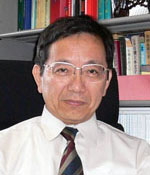
Professor Hayashi is best known for his insightful and seminal contributions to the area of catalytic asymmetric synthesis, especially carbon-carbon bond forming reactions using chiral transition metal catalysts. He was the first to succeed in palladium-catalyzed asymmetric cross-coupling, gold-catalyzed asymmetric aldol-type reaction, and rhodium-catalyzed asymmetric addition reactions. His another outstanding contribution is the development of new and powerful chiral ligands. Chiral ferrocenylphosphines have been widely used for various types of asymmetric reactions, and the chiral dienes he designed recently are attracting particular attention as an unprecedented type of chiral ligands.
Professor David A. Evans
Department of Chemistry and Chemical Biology, Harvard University, Cambridge, USA.
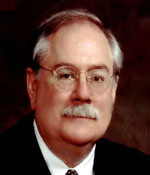
Professor Evans has made significant advances in the design of stereoselective reactions and the applications of these reactions to natural products synthesis. Especially enantioselective Diels-Alder, Michael, and aldol reactions are three of the important families of processes developed in his group. In the area of synthetic design, he has achieved synthesis of complex natural products through the exclusive use of chiral auxiliaries to control stereochemical relationships. Evans’ chiral auxiliaries and chiral catalysts for enantioselective bond formation are widely used in both industrial and academic laboratories throughout the world.
Professor Tsutomu Katsuki
Department of Chemistry, Faculty of Science, Graduate School, Kyushu University, Fukuoka, Japan
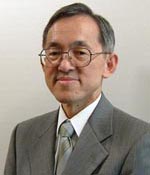
Professor Katsuki has been contributing to advancement of ecological asymmetric synthesis as a leading chemist, demonstrating the power of molecular catalysis comparable to that of enzyme. He has discovered asymmetric epoxidation of allylic alcohols in collaboration with Professor K. Barry Sharpless and recently reported asymmetric epoxidation of simple olefins using aqueous hydrogen peroxide. He first introduced chiral catalysts activated by photo-irradiation and realized various aerobic asymmetric oxidations
Professor Dieter Seebach
Laboratorium fur Organische Chemie, ETH Honggerberg, Switzerland
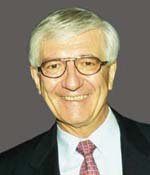
Professor Seebach has been serving as one of the top scientists more than four decades, creating a range of new concepts and paradigms in organic synthesis. His contributions have made ever-increasing impact not only on fundamental as well as practical organic synthesis, but also on various related fields, including material sciences and biochemical fields.
Professor Gilbert Stork
Department of Chemistry, Columbia University, New York, U.S.A.
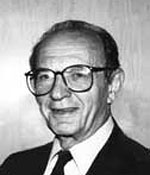
Professor Stork has been leading the field of organic synthesis for over half a century. With his cantharidin synthesis and the Stork-Eschenmoser hypothesis of steroid synthesis in the 1950’s, he introduced the concept of “stereoselective organic synthesis” and created a number of fundamental synthetic methods such as enamine and enol silyl ether methodologies and radical cyclization. In 2001, he published the first completely stereoselective total synthesis of quinine.
Emeritus Professor Henri B. Kagan
Laboratoire de Synthese Asymetrique Universite Paris-Sud France
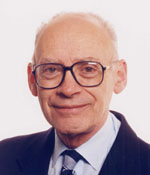
Professor Kagan has been a leader in the field of asymmetric synthesis, presenting many first examples including those of asymmetric synthesis using circularly polarized light, a chiral bidentate diphosphine ligand (DIOP), and a chiral “homogeneous” supported catalyst.
